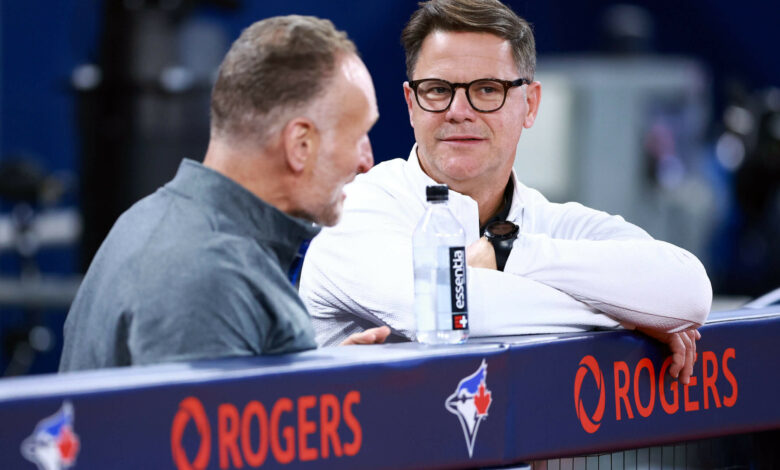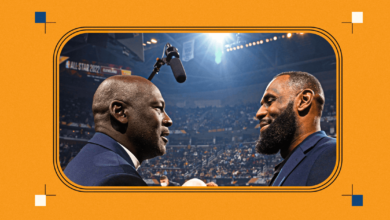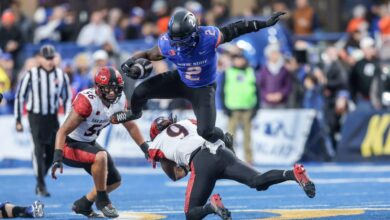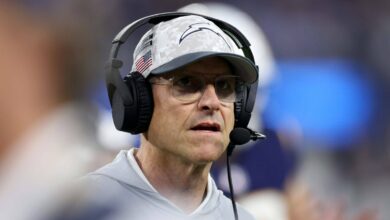Why Front Office Changes Seem Unlikely for Most Underperforming MLB Teams

Fans in some major cities want change. In many cases, ownership changes, yes. But at the very least, the front office changes.
And in many cases, those changes seem unlikely.
“I’m a big believer in stability and continuity, and those are the competitive advantages in professional sports. Reaction and change doesn’t necessarily mean improvement,” Toronto Blue Jays president Mark Shapiro said last month when asked about the status of his general manager, Ross Atkins.
No one should be surprised if other managers at underperforming clubs make similar comments in the coming weeks. It begs the question: why are owners so complacent? Why aren’t more front offices in the hot seat?
Many Blue Jays fans are annoyed, if not outright angry. The same goes for fans of the St. Louis Cardinals, Seattle Mariners, San Francisco Giants, Cincinnati Reds and Pittsburgh Pirates.
Those teams wanted to play, but didn’t. And yet, more trust-the-process whining is likely to come their way. Insular, pathetic franchises—the Chicago White Sox, Oakland Athletics, Miami Marlins and Colorado Rockies, to name four—belong in a special category. Those teams barely bothered to try.
For underperforming clubs, managers are always easy scapegoats. The Mariners have fired theirs. The Reds, Pirates and others may have, too. But modern managers are glorified middlemen, extensions of their front offices. A change of manager is often an act of distraction by the head of baseball operations, an attempt to buy more time.
Shapiro had a point. Stability and continuity should indeed be valued. If teams, especially in this age of social media, responded to every fan outburst, they would be firing people every three days, if not every three minutes.
Yet the passivity in sports is disturbing.
Part of it could come from the expansion of the postseason in 2022, and the illusion of contention provided by the addition of a third wild card in each league. Think of the Chicago Cubs. A good August pushed them to the fringes of the wild-card race, and now things aren’t looking so bad, if you’re willing to ignore how they’ve underperformed for four months.
Another factor is the analytically based groupthink that permeates the front offices. Fire your head of baseball operations and who do you hire? Probably another executive whose decision-making is not all that different from the one you fired.
The biggest problem, however, is that many teams face only minimal financial pressure, the kind of pressure that would motivate a company to take action.
Most franchises seem to have it pretty good, but you wouldn’t know it from their occasional rhetoric, whether it’s during the COVID-19 pandemic or the recent regional television uproar. And you wouldn’t know it from the management’s bungling, every time collective bargaining negotiations take place, about the need for a salary cap.
But consider the way some teams operate:
*The Blue Jays are in last place with a club-record payroll. They haven’t won a playoff game since 2016, the year after former GM Alex Anthopoulos turned down a five-year extension to work under Shapiro. But why should the team’s owner, Rogers Communications, be concerned?
Rogers has a monopoly on baseball in Canada. And the team still ranks ninth in the majors in home attendance, even with renovations that reduce the capacity of Rogers Centre.
*The Cardinals are in danger of finishing with two consecutive losing seasons for the first time since 1958-59. Their loss of 4,561 fans per game in attendance is the second-worst loss in sports, behind only the New York Mets. The growing apathy in St. Louis was most evident during a late August series against the Brewers, when attendance twice fell below 30,000 for the first time since Busch Stadium III opened in 2006.

John Mozeliak, the Cardinals’ president of baseball operations, is the second-longest-tenured executive in the sport. (Kim Klement Neitzel-USA TODAY Sports)
All of which should prompt owner Bill DeWitt Jr. to orchestrate an elegant departure for president of baseball operations John Mozeliak, the sport’s second-longest-serving lead executive. Such a move would allow DeWitt to either promote former Red Sox executive Chaim Bloom, who joined the club as a consultant this offseason, or make an outside hire.
But here’s the thing: Mozeliak has publicly acknowledged his desire to step back from day-to-day responsibilities when his contract expires at the end of the 2025 season. And DeWitt isn’t the type to let things slide when fans continue to flock to Ballpark Village and attendance at Busch Stadium, even in decline, is still the seventh-highest in the sport.
*The Giants hired a new manager and committed nearly $400 million in new guaranteed money last offseason, and to what end? They’re chasing not just the Los Angeles Dodgers in the NL West, but also the Arizona Diamondbacks and San Diego Padres. In six seasons under president of baseball operations Farhan Zaidi, their only outright success came in 2021, a standout year in which they won 107 games.
This season could be their third straight at .500 or below. They’re an average team in many ways. But Zaidi, who signed an extension of undisclosed length last October, could still be safe. Like DeWitt, Giants owner Greg Johnson isn’t one for disruption, especially when his team’s attendance growth starting in 2023 is the seventh-largest in the sport.
*The Mariners are run by another inert owner, John Stanton. They had a major breakthrough in 2022, ending a 21-year postseason drought, then the longest in professional sports. But what have they done in the two seasons since then? Drawn criticism from catcher Cal Raleigh for underspending. Led the majors in strikeouts for the second straight year, even after losing a portion of their strikeout-prone roster. And on August 23, they replaced manager Scott Servais with a beloved former player, Dan Wilson.
The team has since gone 5-4 and still has a long shot at a playoff berth, wasting the best pitching staff in the majors. President of baseball operations Jerry Dipoto is completing his ninth season. His sloppy handling of Servais’ firing only added to the fans’ frustration. But he appears to have Stanton’s confidence, and it would be a surprise if the team were to start over.
*The Reds, who finished 82-80, spent more than $110 million in free agency. Still, it seemed fitting that their season nearly ended at home in mid-August, when they were outscored 28-3 by the Royals in a three-game sweep. The Royals invested wisely during the offseason. The Reds spent $45 million on odd-man infielder Jeimer Canderlario. And they traded one of their best pitching investments, right-hander Frankie Montas, to the Milwaukee Brewers.
The Reds are striking out too often. They’re not defending well. This is the second straight September in which they’ve had too few starting pitchers due to injuries and inconsistency. And with the exception of shortstop Elly De La Cruz, their position players aren’t improving.
Castellini, unlike some of the other owners mentioned, isn’t necessarily the type to sit back, especially with flat attendance. Manager David Bell appears to be in greater jeopardy than president of baseball operations Nick Krall, who was promoted to his current position at the end of last season. Either way, the clock is ticking. The Reds haven’t won a playoff game in 12 years, or a playoff series since 1995.
*The Pirates are coming off their sixth consecutive losing season, with GM Ben Cherington presiding over the last five seasons. The difference this year is that owner Bob Nutting said The Athletics In February he expected a “meaningful step forward”, adding: “We collectively believe we can compete for the division and a place in the play-offs.”
An 8-21 collapse, much of it coming after Cherington made modest additions at the trade deadline, ended any chance of either. The Pirates’ .463 winning percentage through Sunday is down from their .469 mark last season. But attendance is up nearly 2,000 per game — thank you, Paul Skenes — and Nutting, whose estimated net worth is $1.1 billion, continues to wallow in his revenue-sharing windfall.
Cherington, like any baseball operations chief, can point to a handful of player-development successes as evidence that better days lie ahead. Struggling teams always point to tomorrow. Some, like the Baltimore Orioles, eventually find themselves in a better place. But too many others are running what amounts to a borderline con game.
In most cases, the problem starts with the ownership, not the head of baseball operations. Owners should be scrambling to find the next Anthopoulos, the next Dave Dombrowski, the next AJ Preller. No one would accuse any of those executives of being fearful. But they all work for dedicated owners.
Financial commitment is one thing. Emotional commitment is another, and too many owners see no need to make such investments. Stability and continuity represent the easy way out, even when such noble concepts fail to deliver.
If financial success is achievable without success on the field, why rock the boat?
(Top photo of Blue Jays President/CEO Mark Shapiro (left) and GM Ross Atkins (right): Vaughn Ridley/Getty Images)




